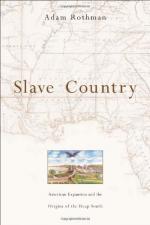|
This section contains 1,056 words (approx. 4 pages at 300 words per page) |

|
As ethnologists sought to understand indigenous cultures during the early nineteenth century, they increasingly employed linguistic analysis—the study of language and its construction—to comprehend natives' cosmological view of the universe. In the process some such as Henry Rowe Schoolcraft discovered that these differences in speech represented deeper, more fundamental differences in whites' and Indian's conceptual understandings of nature, creating a barrier to effective communication:
It has been remarked that the distinction of words into animates and inanimates, is a principle intimately interwoven throughout the structure of the language. . . . For the origin of the principle itself, we need look only to. nature, which endows animate bodies with animate properties and qualities, and vice versa. But it is due to the tribes who speak this language, to have invented one set of adjective symbols to express the ideas peculiarly appropriate to the former, and...
|
This section contains 1,056 words (approx. 4 pages at 300 words per page) |

|




